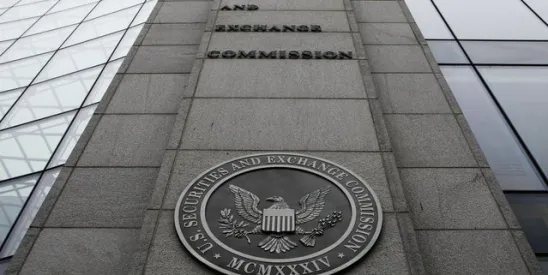On June 28, 2024, the U.S. Supreme Court issued its decision in Loper Bright Enterprises v. Raimondo and Relentless Inc. v. Department of Commerce[1], overruling the Chevron doctrine. This holding overturns the decades-long practice of federal courts deferring to federal agencies’ interpretations of ambiguous statutes. The Court voted 6–3 to abandon this framework and recalibrate the balance of power between federal agencies and courts. While the Court did not overturn the thousands of cases previously decided under Chevron, the shift in legal framework is likely to have significant ramifications going forward across all federal agencies, including the U.S. Securities and Exchange Commission (SEC).
How Did We Get Here?
In the 1984 case Chevron v. Natural Resources Defense Council,[2] the Supreme Court held that courts must defer to an agency interpretation of an ambiguous statute that the agency administers, so long as the interpretation was reasonable. Chevron provided courts with a two-step process for reviewing an agency’s interpretation of a statute. First, courts determined whether the governing statute was ambiguous. If the statute was clear on the issue at hand, courts would enforce the unambiguous language of the statute. If the statute was ambiguous, however, courts would move to step two. In Chevron’s second step, courts would defer to the agency’s interpretation so long as the agency offered a “permissible construction of the statute.” This deference to an agency’s interpretation applied even where the court would have interpreted the statute differently. Accordingly, the Chevron doctrine gave agencies a relatively low burden for defending against challenges to its interpretations and corresponding rules and regulations.
What Was the Basis for This Supreme Court Decision?
In Loper Bright and Relentless, the Court abandoned the Chevron framework and held that courts must exercise independent judgment when interpreting a statute and reviewing an agency’s interpretation of the statute. Citing the Administrative Procedure Act (APA), the Court stated that agencies are not entitled to deference when interpreting statutes. Rather, through the APA Congress intended to place a check on overzealous agencies and leave the power to interpret statutes in the hands of the judiciary. The majority emphasized that this was consistent with Article III of the Constitution and the Framers’ intent for the Judicial branch to interpret statutory language. Accordingly, the Court concluded that Chevron was wrongly decided, justifying overturning this precedent in part by noting their belief that the framework has proven unworkable, and its application has not safeguarded reliance interests.
Notwithstanding its ruling, the Court stated that prior cases that relied on Chevron were not being called into question. It also stated that agency deference, in certain limited situations, may still be appropriate, citing instances where the deference involves agency policymaking and factfinding — as opposed to legal questions — and where the statute delegates such authority to the agency. The Court further pointed out that, to the extent an agency’s expertise rests on factual premises within the agency’s expertise, it may still be informative.
The dissent, drafted by Justice Kagan, strongly criticized the decision, describing it not only as a “jolt to the legal system” but as a “rule of judicial humility [giving] way to a rule of judicial hubris.” Emphasizing the fact that Chevron only applies after a court has exhausted all of its interpretive tools, the dissent took time to go through the justification for an implicit delegation of interpretive authority by Congress to agencies. The dissent also disputed the Court’s claims that, in practice, Chevron was unworkable and the results inconsistent.
What Are the Implications for the SEC?
The Court’s decision could have significant effects on both the SEC’s regulatory and enforcement agendas. Over the last few years, the SEC has put forth an ambitious set of rules, including controversial ones pertaining to climate disclosures, private funds, and digital assets. These rules have been under attack, but with the Court’s decision there is a new path to challenge the SEC’s authority in these and other areas, and possibly more venues to do so. Pre-decision, litigants have strategized to bring their cases in courts and circuits traditionally viewed as less receptive to agency deference. Now, post-decision, that universe may be expanding.
In addition to how the SEC crafts and implements new rules and regulations, the Court’s decision also provides an opportunity to confront existing statutory interpretations. For example, in the recent sweep involving off-channel communications, the scope of “business as such” for broker-dealers and the ability to graft that language on investment advisor requirements to maintain only certain categories of communications was a point of contention among the SEC and the financial services industry. Whether or not this decision will embolden those under the purview of the SEC to litigate rather than settle certain matters remains to be seen, but regardless it will be a factor that defense counsel, and the staff will need to assess.
Another consequence of overturning Chevron may be less certainty surrounding the SEC’s rules and regulations, and less predictability in legal decisions involving statutory interpretation. Despite the Court’s comments about “reliance interests,” interpretive disagreements by the courts are entirely predictable. Furthermore, the judicial process can take a long time to work through. Individuals and entities, however, do not always have that same amount time to prepare for a regulatory change or keep the SEC from proceeding forward with an enforcement action. The SEC’s expanded use of “regulation by enforcement” in recent years has only increased these stressors.
The release of this decision followed on the Jarkesy decision; another ruling with a negative impact on the SEC’s interests. Foley’s Securities Enforcement & Litigation Group also covered the Jarkesy ruling which can be accessed here.
If you have questions about the Chevron doctrine and its impact on the SEC, reach out to any of the authors of this article or your Foley & Lardner attorney.
[1] Loper Bright Enterprises v. Raimondo, No. 22-451 (June 28, 2024), together with Relentless, Inc. v. Department of Commerce, No. 22-1219, available here.
[2] 467 U.S. 837 (1984).






 />i
/>i
